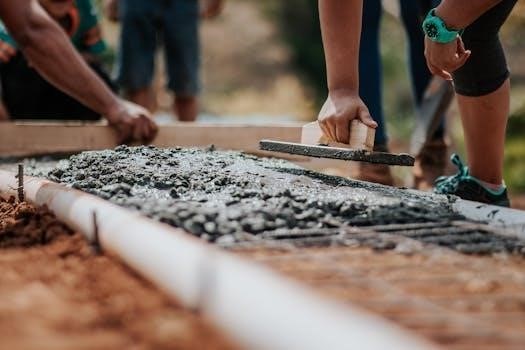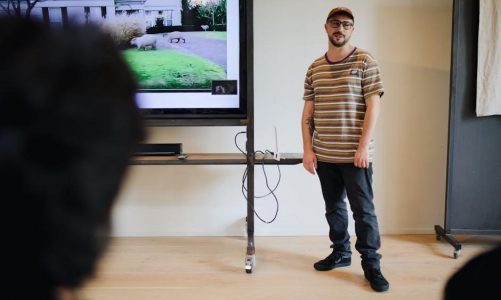Boss DD-200 Manual Overview
The Boss DD-200 Digital Delay manual provides comprehensive instructions for users. It is available in PDF format, ensuring easy access for all owners. The manual covers all aspects of the pedal’s functionality.
DD-200 Owners Manual PDF Download
The official Boss DD-200 owner’s manual is readily available as a PDF download, ensuring users can easily access detailed instructions. This digital format allows for convenient viewing on various devices, including computers, tablets, and smartphones. The PDF document contains essential information about the pedal’s features, settings, and usage guidelines. Users can download the manual directly from the Boss website or authorized retailers. The manual’s clear layout and comprehensive content make it an indispensable resource for both new and experienced DD-200 users. Having the manual in PDF format allows for easy searching and referencing of specific information. This feature is invaluable for troubleshooting or exploring the pedal’s advanced functionalities. The file size is optimized for quick download without compromising on quality or detail.
Multilingual Manual Availability
The Boss DD-200 owner’s manual is available in multiple languages, catering to a global user base. This multilingual approach ensures that users can access the instructions in their preferred language. Besides English, manuals are available in languages such as Russian and Portuguese. The availability of manuals in various languages facilitates a better understanding of the pedal’s features and operation. This commitment to accessibility makes the DD-200 user-friendly for musicians worldwide. Each translated manual retains the original clarity and detail, ensuring consistent information across all versions. Users can easily download their preferred language version from the official Boss website or associated support pages. The multilingual manuals enhance the overall user experience. The manuals help to minimize confusion and maximize the potential of the DD-200.

DD-200 Functionality
The DD-200 offers extensive control over delay parameters, including delay time, feedback, and volume. These adjustments provide a wide range of sound shaping possibilities. Users can customize their delay.
Delay Time Adjustment
The Boss DD-200 Digital Delay pedal allows for precise control over delay time, a crucial element in shaping the overall effect. Users can adjust the delay time to create a variety of rhythmic and atmospheric textures. This adjustment can be made using dedicated controls, enabling both subtle and dramatic shifts in the delay pattern. The manual provides detailed instructions on how to effectively utilize these controls to achieve desired results. The tap tempo functionality further allows for on-the-fly adjustments, syncing the delay time with the tempo of the music. Understanding the nuances of delay time adjustment is key to unlocking the full potential of the DD-200. The manual guides you through different methods to achieve the desired delay settings, ensuring you can easily integrate this delay effect into your playing.
Feedback Control
The feedback control on the Boss DD-200 is essential for shaping the decay and repetition of the delay effect. This parameter determines how much of the delayed signal is fed back into the delay line, resulting in either a single echo or multiple, decaying repeats. A lower feedback setting results in a single, brief echo, while higher settings create longer, more resonant and repeating delays. The manual provides clear guidance on how to adjust the feedback control to achieve specific sonic textures. Experimenting with different feedback settings allows users to create a wide range of ambient effects. Understanding the interplay between feedback and delay time is crucial for mastering the DD-200 and creating unique soundscapes. The manual offers tips and tricks on using the feedback control creatively.
Volume Adjustment
The volume adjustment on the Boss DD-200 allows users to control the level of the delayed signal in relation to the dry signal. This is a crucial parameter for balancing the delay effect within a mix. The manual provides instructions on how to use the volume knob or parameter to achieve the desired effect. A lower volume setting will result in a subtle, almost imperceptible delay, while a higher setting will make the delay more prominent. Proper adjustment of the volume ensures that the delay enhances, rather than overwhelms, the original sound. The manual also likely discusses the volume adjustment in relation to different delay modes and how it interacts with other parameters such as feedback. Users are encouraged to experiment to find their optimal level. This allows for dynamic and nuanced use of the DD-200’s delay capabilities.

DD-200 Features
The DD-200 boasts features such as memory selection, looper control, and bypass options. These elements enhance its versatility and user experience, allowing for a wide range of creative applications.
Memory Selection
The Boss DD-200 allows users to store and recall various delay settings through its memory selection feature. This capability enables seamless transitions between different delay types and parameters during a performance or recording session. Users can save their preferred delay time, feedback, and volume settings into the pedal’s memory locations, providing a convenient way to access customized sounds. The memory selection feature offers both manual and preset options, giving users the flexibility to choose the most suitable approach for their specific needs. The pedal’s intuitive interface makes it easy to navigate and select the desired memory setting. The selected memory is indicated clearly on the unit, ensuring that the user always knows which preset is active. This feature is essential for guitarists who require multiple delay sounds within a single performance or recording.
Looper Control
The Boss DD-200 incorporates a versatile looper function that enhances its creative capabilities. Looper control allows users to record phrases and layer them to create complex soundscapes. The looper functions are accessible through dedicated controls, making it simple to record, playback, overdub, and stop loops. This feature is beneficial for solo performers who need to add backing tracks or for experimental musicians seeking to layer various sonic textures. The looper is designed with user-friendly operation in mind, ensuring a seamless experience. The DD-200’s looper functionality provides a range of options, including record, play, overdub, and clear controls, enabling precise command over the looping process. The looper feature expands the pedal’s versatility, making it a powerful tool for both live and studio settings.
Bypass Options
The Boss DD-200 offers multiple bypass options, providing flexibility in how the pedal interacts with your signal chain. Users can select between buffered and true bypass modes. Buffered bypass preserves the signal quality, especially in long cable runs, by maintaining signal strength and preventing signal loss. True bypass, on the other hand, removes the pedal from the signal chain entirely when bypassed, ensuring the purest signal path. The choice between these bypass options is crucial for optimizing your tone and signal integrity. Selecting the appropriate bypass mode ensures the pedal operates seamlessly within a complex setup. Understanding the differences between true bypass and buffered bypass is essential for achieving the desired sound and performance.

DD-200 Technical Details
The DD-200 operates on a standard power supply and includes main specifications detailing its digital delay capabilities. It also has compatibility with expression pedals for extended control.
Power Supply Specifications
The Boss DD-200 digital delay pedal is designed to operate using either a set of three standard AA alkaline batteries, specifically LR6 type, or it can be powered by an external AC adapter. It is crucial to ensure that the AC adapter used is a BOSS PSA series adapter or one that meets the required specifications to prevent any damage to the unit or causing malfunctions during use. The unit’s power consumption is designed to be efficient, however, heavy use with batteries may necessitate frequent replacement. It is advisable to use a power adapter for extended playing sessions or performances, ensuring consistent performance and avoiding any interruptions from battery depletion. Always check the compatibility of your power supply to the DD-200 specifications before connecting.
Main Specifications
The Boss DD-200 is a digital delay pedal offering a wide range of delay effects. Its primary function revolves around providing high-quality digital delay, with features tailored for diverse musical styles. It includes multiple delay modes, allowing for versatile sonic exploration. The pedal incorporates user-friendly controls for adjusting delay time, feedback, and effect level. It boasts a robust construction, suitable for live performance environments. Its digital processing ensures a clear and consistent sound. The DD-200 also includes memory locations for storing custom presets, and it supports various bypass modes for seamless integration into pedalboards. The unit is designed for both guitar and bass.
Expression Pedal Compatibility
The Boss DD-200 offers excellent expression pedal compatibility, expanding its functionality significantly. It allows users to connect an expression pedal via the CTL 1, 2/EXP jack, enabling real-time control over various parameters; Typically, users can assign the expression pedal to modulate delay time, feedback, or effect level. This provides dynamic control during live performances. The manual specifies using a 1/4″ TRS stereo cable for the connection, such as the one included with the EV-30 expression pedal. It’s essential to consult the manual for specific settings and customization options related to expression pedal use. This feature greatly enhances the creative potential of the DD-200.

DD-200 Usage
The DD-200 is designed for easy use. The manual details proper setup, including the use of rubber feet to prevent damage, connecting to a power source, and tap tempo functionality.
Using with Rubber Feet
The Boss DD-200 digital delay pedal is equipped with rubber feet on its base. These rubber feet are not merely a cosmetic addition; they serve a critical function in protecting both the pedal and the surfaces it is placed upon. The rubber feet provide a stable grip, preventing the pedal from slipping or sliding during use, which is particularly important during live performances or studio sessions where precise control is paramount. Furthermore, these feet elevate the pedal slightly, preventing direct contact between the metal casing and the floor or other surfaces. This is especially important on delicate or easily scratched surfaces, helping to maintain the condition of the floors and the pedal itself. Using the unit without these rubber feet is not recommended as it can potentially cause damage to both the pedal and the surface. The manual emphasizes the importance of these seemingly small but vital components for proper and safe usage of the DD-200.
Connecting to Power
The Boss DD-200 digital delay pedal requires a specific power supply to function correctly. The manual specifies that the pedal can be powered using either three AA alkaline batteries or an AC adapter. It is crucial to use an adapter that is designed for Boss equipment, typically a PSA series adapter, to ensure proper operation and avoid potential damage to the unit. The power requirements are clearly outlined in the manual, emphasizing the need to match the voltage and current specifications of the pedal. Using an incorrect power supply could lead to malfunctions or even permanent damage. The manual also advises users to check the power source compatibility before connecting to avoid any potential issues. It is recommended to read this section carefully, as incorrect power usage can void the warranty and impact the pedal’s performance. The manual also includes detailed diagrams that show the correct way to plug the power adapter into the pedal.
Tap Tempo Functionality
The Boss DD-200 digital delay pedal features a tap tempo function, allowing users to set the delay time by tapping a footswitch. The manual explains how to use the tap tempo feature, which is essential for synchronizing the delay effect with the tempo of a song. The tap tempo is usually activated by pressing a designated button, allowing you to establish the desired rhythm. The manual specifies that the tempo can be set by tapping multiple times. The unit also features a tap division button, which lets you divide the tapped tempo for different rhythmic subdivisions. The tap tempo can be used to control the delay time for all the available delay types, providing great flexibility. The manual also explains how the tap tempo interacts with other functions, such as memory selection and looper control. The use of tap tempo ensures that the delay effects are always perfectly aligned with the music. The manual also warns about potential issues with tap tempo if there are any malfunctions with the footswitch.


